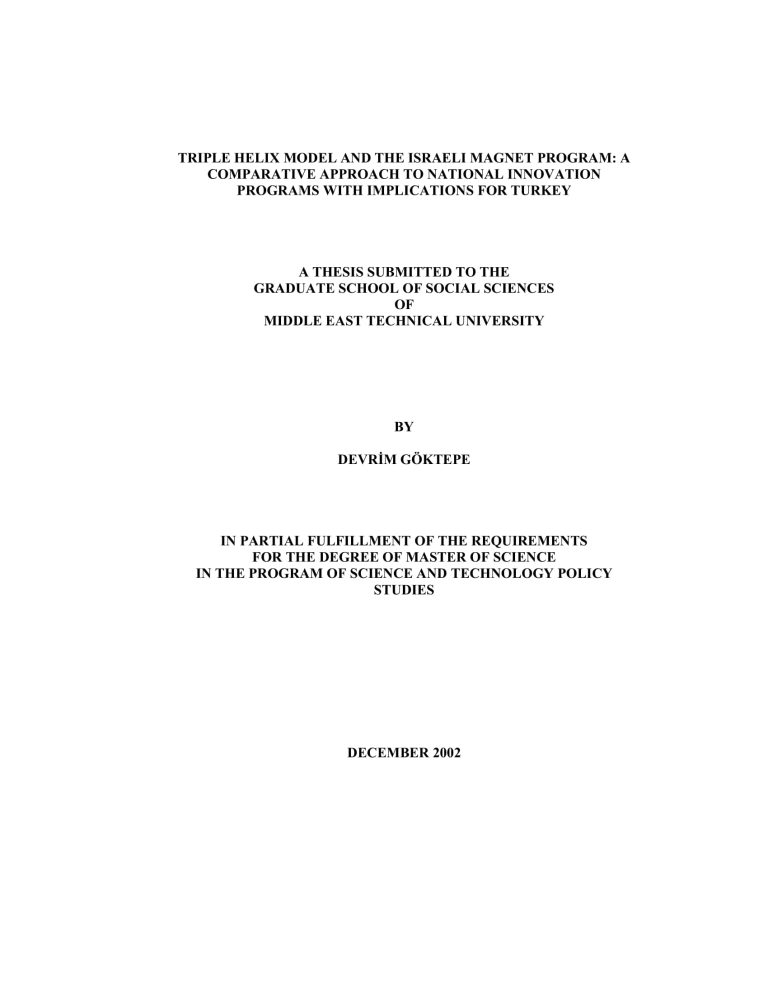The objectives of this dissertation are to examine science, technology and innovation policies, national innovation system and networking theories to refine the concepts and indicators for the formation of innovation networks and to identify the conditions for international innovation networks. It specifically focuses on the Triple Helix model of Etzkowitz and Leydesdorff (1994), which has brought new perspectives over the conventional models of innovation by
claiming the importance of evolutionary economic activities, non-linear systemic networks and institutional restructuring for university, industry and government (UGI) relations.
The general research process of the thesis is a comparative analysis between the Israeli Magnet Program and twelve different national programs designed for innovation networks between university, industry and government. The analysis of the comparative study and the fieldwork that has been carried out among the Israeli Magnet participants during a one-year research program revealed the importance of the interaction of institutional and social indicators for the formation of successful innovation networks in Israel.
These implications are reviewed for Turkey in the context of catching-up and cross-regional collaboration between Israel and Turkey. Even though each nation experiences a unique pattern in the transition to knowledge-based economy, all of the nations are advised to apply; networking polices to utilize the benefits of knowledge-based economy. Consequently, the thesis does not claim to present a general innovation model that can be applied by any country, but rather it attempts to reach a common understanding of Triple Helix model based national and international innovation networks.












